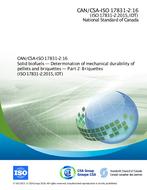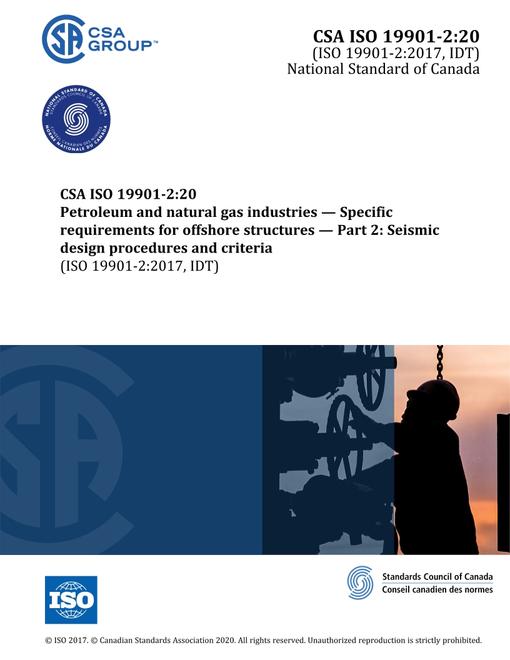-
-
Available Formats
- Availability
- Priced From ( in USD )
-
Available Formats
-
- Secure PDF 🔒
- Immediate download
- $215.00
- Add to Cart
-
- Printed Edition
- Ships in 1-2 business days
- $215.00
- Add to Cart
Customers Who Bought This Also Bought
-

CAN/CSA-ISO 14971-1-99
Priced From $68.00 -

CAN/CSA-ISO 17831-2:16 (R2021)
Priced From $45.00 -

CAN/CSA-ISO 11138-5:17 (R2022)
Priced From $69.00 -

CAN/CSA-ISO 19901-2:20
Priced From $190.00
About This Item
Full Description
CSA Preface
This is the first edition of CSA ISO 19901-10, Petroleum and natural gas industries - Specific requirements for offshore structures - Part 10: Marine geophysical investigations , which is an adoption without modification of the identically titled ISO (International Organization for Standardization) Standard 19901-10 (first edition, 2021-03). For brevity, this Standard will be referred to as "CSA ISO 19901-10" throughout.
This Standard is intended to be used in conjunction with CSA ISO 19901-8:15, Petroleum and natural gas industries - Specific requirements for offshore structures - Part 8: Marine soil investigations (adopted ISO 19901-8:2014). This Standard has been developed in compliance with Standards Council of Canada requirements for National Standards of Canada. It has been published as a National Standard of Canada by CSA Group.
Scope
This document provides requirements and guidelines for marine geophysical investigations. It is applicable to operators/end users, contractors and public and regulatory authorities concerned with marine site investigations for offshore structures for petroleum and natural gas industries. This document provides requirements, specifications, and guidance for: a)objectives, planning, and quality management; b)positioning; c)seafloor mapping, including instrumentation and acquisition parameters, acquisition methods, anddeliverables; d)sub-seafloor mapping, including seismic instrumentation and acquisition parameters, and non-seismic-reflection methods; e)reporting; f)data integration, interpretation, and investigation of geohazards. This document is applicable to investigation of the seafloor and the sub-seafloor, from shallow coastal waters to water depths of 3 000 m and more. It provides guidance for the integration of the results from marine soil investigations and marine geophysical investigations with other relevant datasets.
NOTE 1 The depth of interest for sub-seafloor mapping depends on the objectives of the investigation. For offshore construction, the depths of investigation are typically in the range 1 m below seafloor to 200 m below seafloor. Some methods for sub-seafloor mapping can also achieve much greater investigation depths, for example for assessing geohazards for hydrocarbon well drilling. There is a fundamental difference between seafloor mapping and sub-seafloor mapping: seafloor signal resolution can be specified, while sub-seafloor signal resolution and penetration cannot. This document therefore contains requirements for the use of certain techniques for certain types of seafloor mapping and sub-seafloor mapping (similarly, requirements are given for certain aspects of data processing). If other techniques can be shown to obtain the same information, with the same or better resolution and accuracy, then those techniques may be used. Mapping of pre-drilling well-site geohazards beneath the seafloor is part of the scope of this document.
NOTE 2 This implies depths of investigation that are typically 200 m below the first pressure-containment casing string or 1 000 m below the seafloor, whichever is greatest. Mapping of pre-drilling well-site geohazards is therefore the deepest type of investigation covered by this document. In this document, positioning information relates only to the positioning of survey platforms, sources and receivers. The processes used to determine positions of seafloor and sub-seafloor data points are not covered in this document. Guidance only is given in this document for the use of marine shear waves (A.8.3.3), marine surface waves (A.8.3.4), electrical resistivity imaging (A.8.3.5) and electromagnetic imaging (A.8.3.6).





